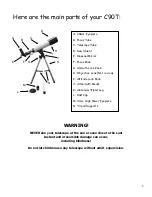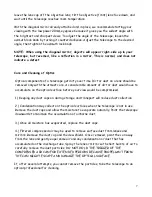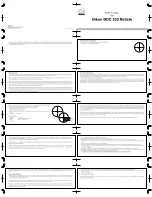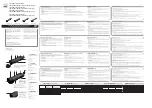
7
leave the lens cap off the objective lens, tilt the objective (front) lens face down, and
wait until the telescope reaches room temperature.
With the diagonal mirror already attached and in place, we recommend starting your
viewing with the low power 20mm eyepiece because it gives you the widest angle with
the brightest and sharpest views. To adjust the angle of the telescope, loosen the
azimuth lock knob by turning it counterclockwise. Adjust the telescope to the desired
angle, then tighten the azimuth lock knob.
NOTE: When using the diagonal mirror, objects will appear right-side up in your
telescope, but reversed, like a reflection in a mirror. This is normal, and does not
indicate a defect.
Care and Cleaning of Optics
Optical components of a telescope get dirty over time. Dirt or dust on a lens should be
removed only with the utmost care. A considerable amount of dirt or dust would have to
accumulate on the optical surface before your view would be compromised.
1.) Keeping any dust caps on during storage and transport will reduce dust collection.
2.) Condensation may collect on the optical surfaces when the telescope is not in use.
Remove the dust caps and allow the moisture to evaporate naturally. Point the telescope
downwards to minimize the accumulation of airborne dust.
3.) Once all moisture has evaporated, replace the dust caps.
4.) Filtered compressed air may be used to remove surface dust from lenses and
mirrors. Remove the dust cap and the dew shield. Once removed, point the can away
from the lens and gently expel some air and any condensation or dust that has
accumulated on the discharge tube. Spray the lens or mirror with short bursts of air to
carefully remove the dust particles. DO NOT HOLD THE TRIGGER OF THE
COMPRESSED AIR CAN FOR EXTENDED PERIODS BECAUSE PROPELLANT FROM
THE CAN MIGHT ESCAPE AND DAMAGE THE OPTICAL SURFACE.
If, after several attempts, you cannot remove the particles, take the telescope to an
optical professional for cleaning.


















